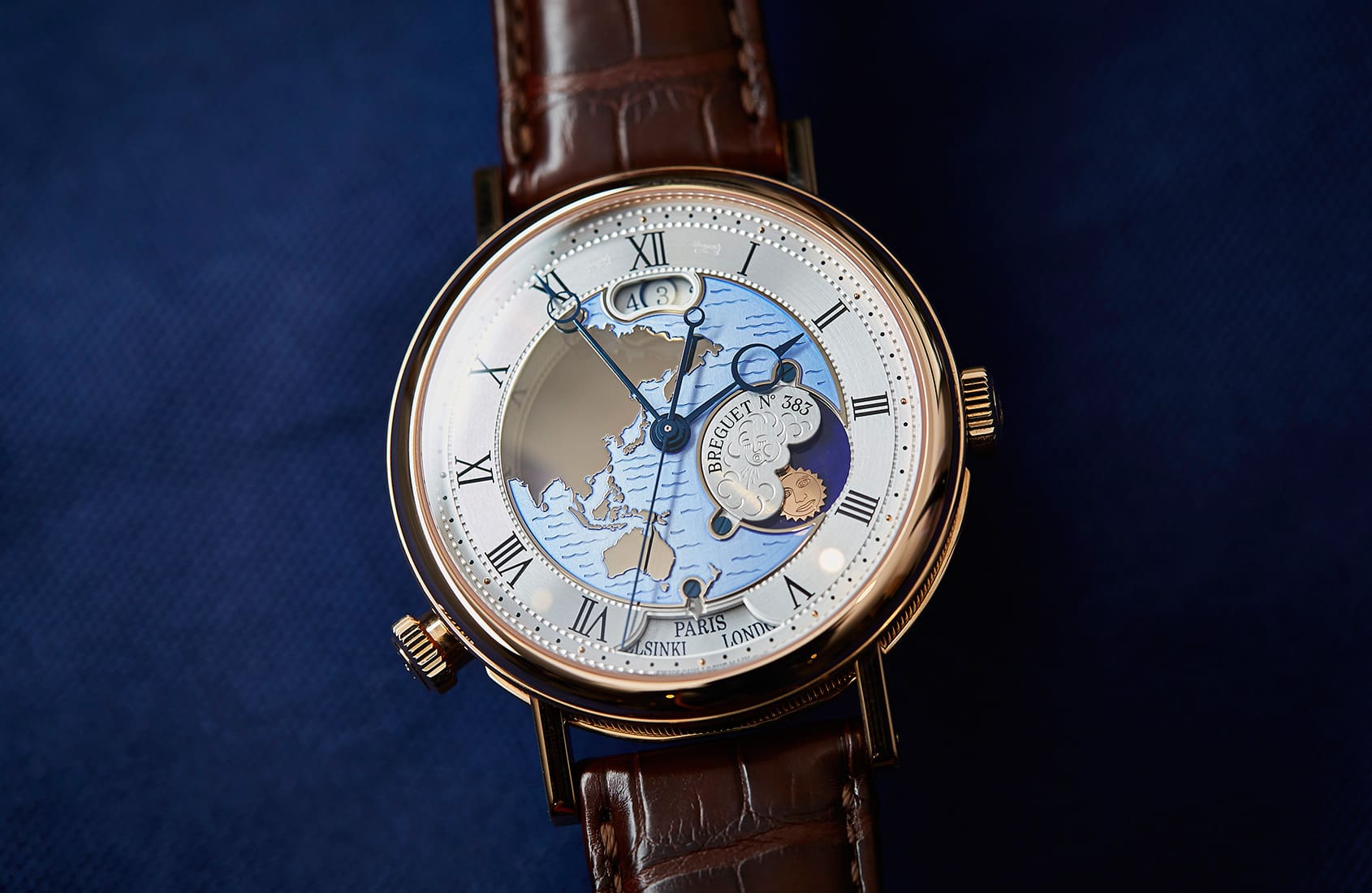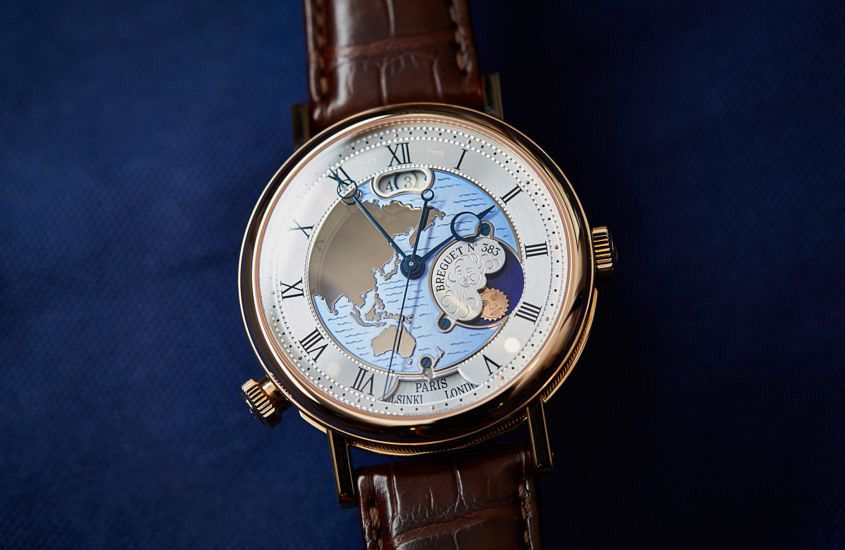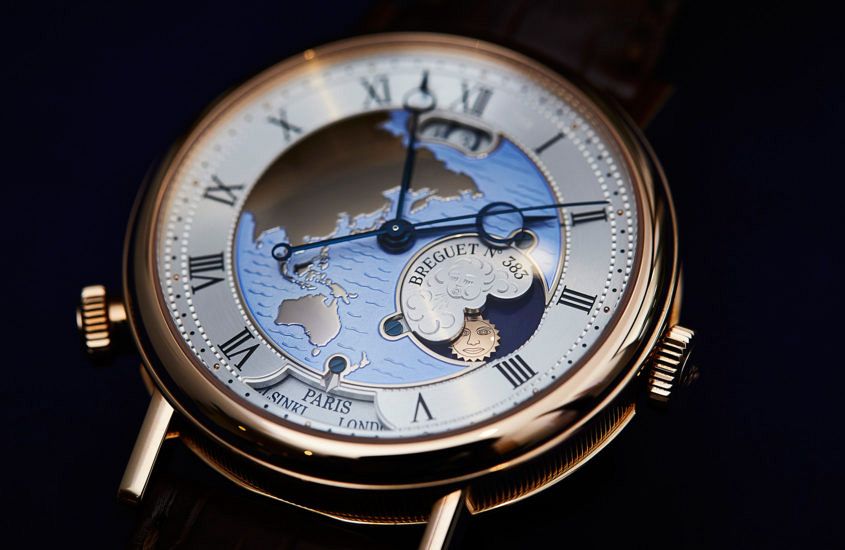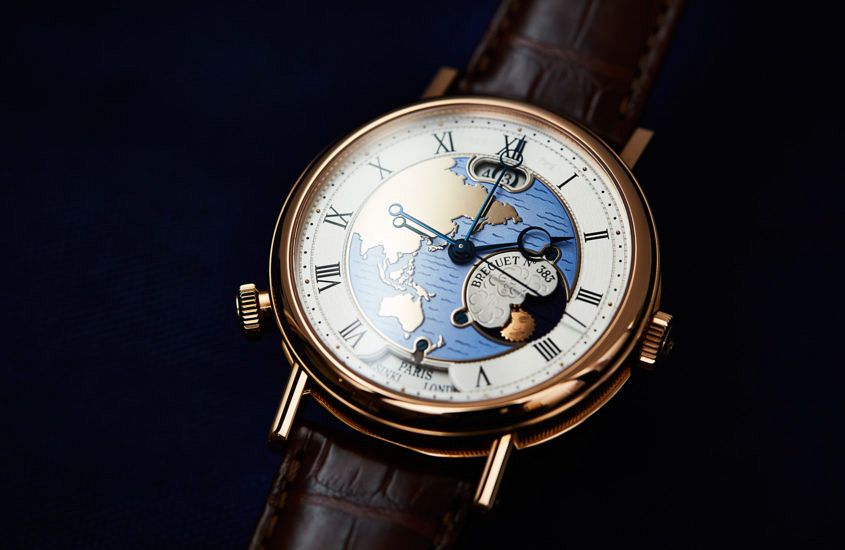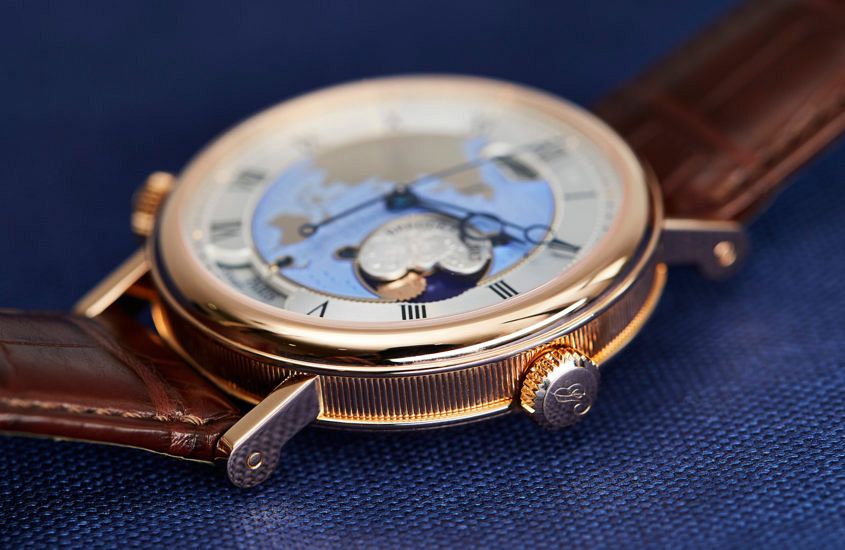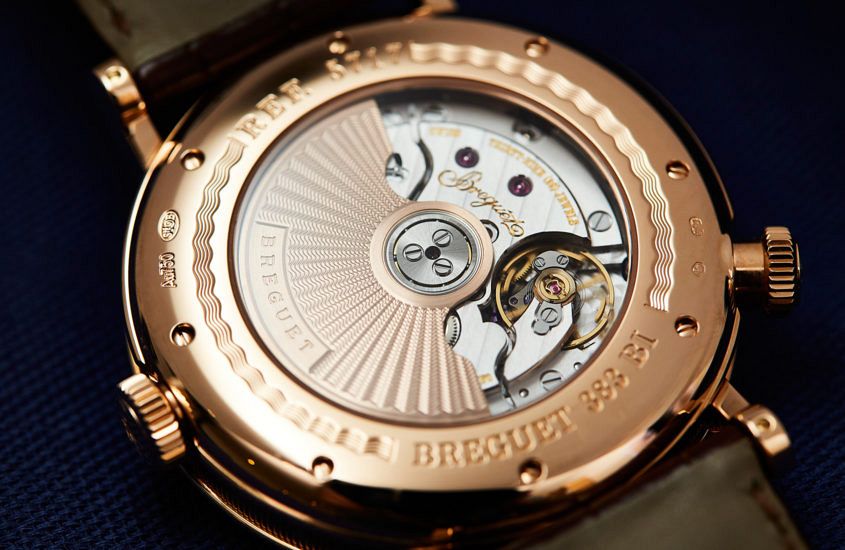Dual time done right, the Breguet Classique Hora Mundi ref. 5717
Time+TideEditor’s note: Trust Breguet to take the comparatively uncomplicated act of adding a second time zone into something extra. Rather than your typical GMT hand scenario, the Breguet Classique Hora Mundi ref. 5717 demonstrates a very cool, very technical twist on the complication. Read on for Sandra’s review …
The remarkable Hora Mundi ref. 5717 made its first appearance in 2011, to an enthusiastic reception. Then, in 2016, when Breguet launched an updated version (ref. 5727) they spoke of it as a replacement for the original. But some things are simply too special to discontinue. Thank goodness – for we rarely encounter a watch that combines technical genius, great beauty and immense charm in the way that this version of Hora Mundi does.
For those of us who are constantly on the move, a multiple-time-zone complication is one of the most useful things to have in a watch – and, unsurprisingly, it’s offered by almost all of the top makers. More surprising, though, is how little variety there is in the style of display: a pointer hand or a sub-dial and that’s pretty much where the choice ends. Breguet, however, chose to give a highly original visual expression to its very different version of the complication. More on the brains later, but first let’s focus on the beauty – because, really, the design and the quality of execution are exceptional.
The case is classic Breguet, with the kind of attention to detail that you know only if you know: those straight lugs are soldered, not screwed, to the case, the joins invisible to the naked eye. They slot seamlessly into the grooves of the fluted case-band, which is itself a tour de force of hand-finishing.
The beauty
Oh, that dial. How does something so instantly evocative of 18th century map-making – something almost absurdly romantic – manage to look so right and so relevant in the 21st?
In the centre of the solid gold dial, a map of Asia and Oceania is cut out and polished to almost a mirror finish (two other versions have maps of Europe-Africa and the Americas respectively). The surrounding sea is rendered in a pale blue semi-matt lacquer, laid over a guilloché wave pattern. Around it, the hours ring is finished with circular brushing, with a series of engraved dots marking its borders and the secret Breguet signature lightly etched on either side of the XII.
Then we have the elements that display the complication: curved apertures at ‘12’ and ‘6’ showing the date and city (time zone) names respectively, and the circular day-night display at ‘4’. Each is surrounded by a fine filet of polished gold, held in place by heat-blued screws – which match the blue of the classic Breguet hands.
That whimsical day-night display takes the dial to another level: from beneath a puffy cloud of brushed white gold, the day or night disc appears and disappears, against a backdrop of lapis lazuli; each of the three elements is hand-engraved with a different and highly expressive face, representing the wind, sun and moon. At the bottom of the dial, a tiny hand-polished pointer – shaped like a fountain-pen nib and attached with a blued screw – indicates the city name. While the top aperture shows three dates, we’re not left to assume, “Oh, it’s the middle one”. A circle of heat-blued metal (which exactly matches the rings on the hour and minute hands) sits over the exact date.
It’s an awful lot of detail in just one dial, yet it doesn’t look at all overloaded. That’s because every element is essential to the effect of the whole – a dial of rare charm and character that makes us believe once again in the romance of travel.
The brains
Of course, all of this loveliness exists for a purpose: to display the complex job being done by the machinery underneath. This is the first – and still the only – instant-jumping time zone display (with a load of patents to its name). Put simply, it is based on two memory wheels (along with a whole raft of blockers, rockers and cams). Explaining the intricate mechanics of it is a whole, deeply technical, article in itself – but here’s how it works, in the operational sense.
Let’s say you’re in London, it’s 11pm and you’re about to fly to Melbourne. You choose London as the city name and set the local time. Then you enter Melbourne as the second time by turning the crown until Melbourne shows in the city window. Press the pusher at eight o’clock and the displays will jump to show Melbourne time; press again and they will jump back to London. Press again … back to Melbourne, and so on.
It’s not only the hour and minute hands that change. As it’s 9am in Melbourne, the sun will pop up on the day-night indicator (and since it’s early in the day, it will appear at the beginning of its daytime arc). Not only that, the date will jump forward by a day. When you revert to London time, the date will jump backwards – a major technical feat, that – and the day-night display will show the moon again.
Now let’s say that before boarding your flight you want also to check the time in California. Simply turn the crown to show Los Angeles in the city ring, press the pusher and, hey presto, the same magic happens – this time with the day-night indicator showing the sun, as it will be 3pm on the West Coast.
The most liberating thing about the Hora Mundi is that it is so ridiculously easy to switch between time zones; rather than limiting you to local time and home time, as a regular GMT watch does, it becomes a selective world timer. The cherry on the cake is that, in the ref. 5717, it does so with a degree of charm and beauty that will have you grinning with pleasure every time you check a different zone.
Breguet Hora Mundi (ref. 5717)Australian pricing
Breguet Hora Mundi 5717 has an Australian RRP of $101,300.




